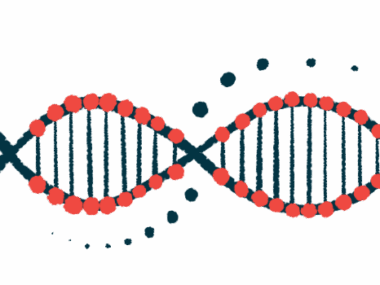Modified gene therapy may treat cardiovascular problems in Fabry
Strategy 'shows great potential' as treatment approach, researchers say
Written by |

Modifying a potential gene therapy with a specific antibody increased its efficacy in cells that line blood vessels — cells whose dysfunction underlies cardiovascular problems in Fabry disease — a new study from researchers in Spain and the Netherlands showed.
This strategy, tested here in a cellular model of the genetic condition, represents a way to selectively target disease-related cardiovascular complications via gene therapy, and “shows great potential as a therapeutic approach for Fabry disease,” according to the researchers.
The team noted that further studies in animals and Fabry patients are required to demonstrate the strategy’s potential for therapeutic applications.
Titled “Gene therapy with lipid nanoparticles for Fabry disease: Leveraging E-selectin for targeted delivery to endothelial cells,” the study was published in the Journal of Drug Delivery Science and Technology.
New treatments needed to address cardiovascular problems in Fabry
In Fabry, mutations in the GLA gene result in a deficiency in alpha-Gal A, an enzyme needed to break down certain fatty molecules, particularly globotriaosylceramide (Gb3), inside cells. When alpha-Gal A is dysfunctional or missing, Gb3 builds up to toxic levels in cells, damaging various organs, particularly the heart, kidneys, and blood vessels.
Life-threatening cardiovascular complications in Fabry arise from the dysfunction of the cells that line blood vessels, called endothelial cells.
Due to the impact of endothelial dysfunction on the organs in Fabry, “endothelial cells (ECs) represent one of the most important targets in the treatments of this disease,” the researchers wrote.
The standard Fabry treatment is enzyme replacement therapy (ERT), in which a functional, lab-made version of the alpha-Gal A enzyme is administered directly into the bloodstream. Still, ERT requires lifelong regular treatments, and despite improving kidney function, it doesn’t fully address cardiovascular problems related to Fabry.
Gene therapy represents a potential one-time treatment for endothelial dysfunction in Fabry, in which a functional version of the GLA gene is delivered to cells, allowing them to produce a working version of the alpha-Gal A enzyme.
However, delivering such gene therapies to endothelial cells under the pressure of blood flow is a major challenge.
E-selectin is a protein produced on the surface of endothelial cells in response to injury. There, the protein binds and captures certain immune cells in the flowing bloodstream, recruiting them to the site of injury to begin repair. In fact, Gb3 accumulation increases the expression of E-selectin in endothelial cells.
Thus, the team tested whether adding antibodies to gene therapies that specifically bind to E-selectin would allow its selective delivery to endothelial cells in blood vessels.
[This work is effectively] opening the door to a new therapeutic strategy in the treatment of [Fabry disease].
Two gene therapies were created: one with DNA encoding a florescent green protein (EGFP) as an easily detectable model system and the other with the GLA gene. Both gene therapies were packaged in lipid nanoparticles (LNPs) coupled to antibodies that target E-selectin.
Experiments confirmed that LNPs coupled to E-selectin antibodies increased the interaction with endothelial cells compared with uncoupled LNPs.
The gene therapy carrying the GLA gene was then tested against an endothelial cellular model of the disease called immortalized Fabry endothelial cell line-1, or IMFE-1; two days later, levels of alpha-Gal A were measured. Coupled LNPs with the GLA gene induced the production of the enzyme more efficiently than LNPs alone, and increased alpha-Gal A activity to levels that were 6.5 times higher than in untreated cells.
“Anti-E-selectin-coupled LNPs are a new strategy to enhance [DNA] delivery to activated [endothelial cells], and we have demonstrated their potential applicability to the treatment of [Fabry] by gene therapy,” the researchers concluded.
This work is effectively “opening the door to a new therapeutic strategy in the treatment of [Fabry disease],” the team wrote.






